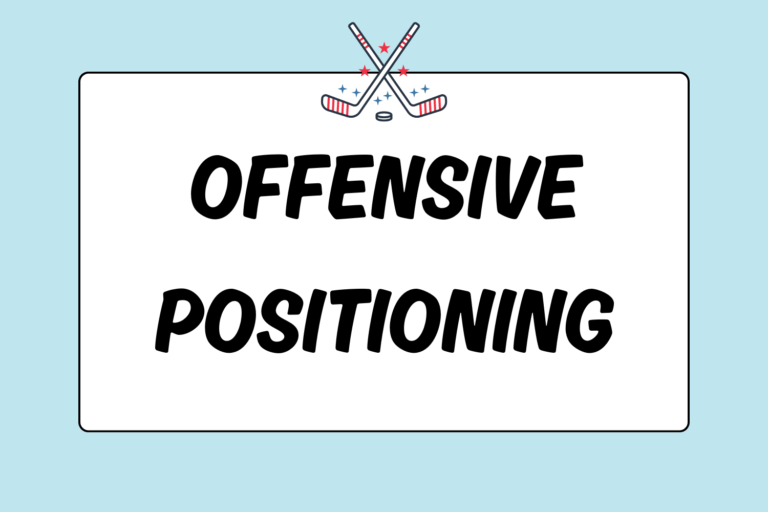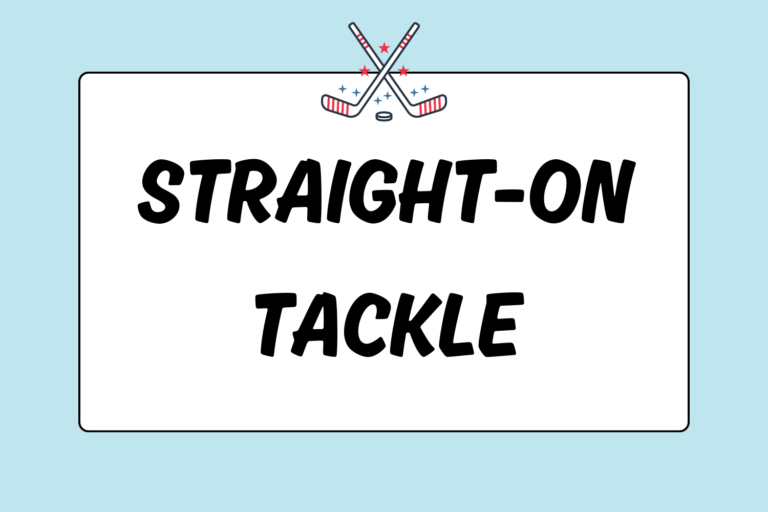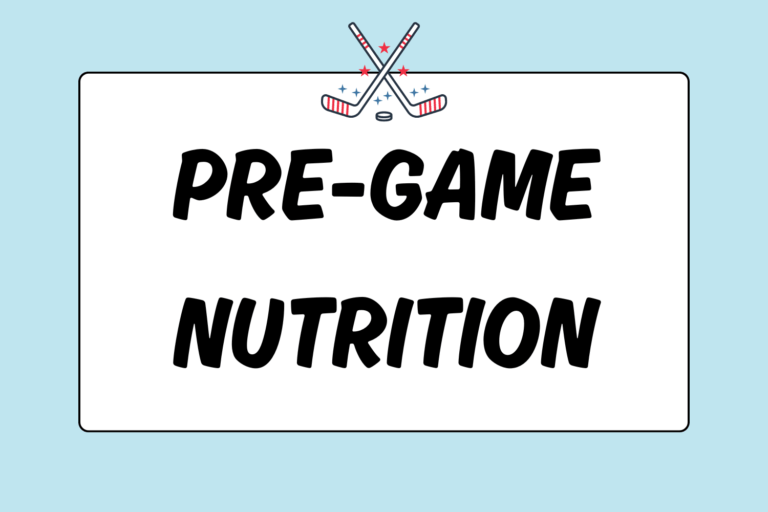The drag flick is a specialty shot used on penalty corners to take lifted shots on goal. There is no backswing used on a drag flick, so it is technically classified as a type of push. Although it can reach high speeds, this is the only type of shot allowed to be lifted on a penalty corner for the initial shot.
The move is extremely complicated, so don’t be discouraged if it takes you weeks, months, or even years to perfect.
Mechanics
Since the move is highly technical, this guide will break down the drag flick into individual steps. Once you have the basics down, you can put all the pieces together.
The Grip
Start the drag flick by placing your hands in the basic grip. Extend your pointer finger down against the back of the stick for added support.
The Approach
To start the drag flick, place the ball about six inches outside of the shooting circle. On a penalty corner in an actual game, the stopper will stop and place the ball for you.
There are several different ways to approach the ball, but this guide will cover the commonly used cross-step technique. To complete the cross-step:
- Start by positioning yourself about four feet behind the top of the circle. Position yourself perpendicular to your target (left foot closest to the goal), but allow your hips and upper body to face away from the goal (this will provide the torque and power needed for your drag flick).
- Take a long step forward with your left foot and land almost in line with the ball.
- Then, bring your right foot forward — crossing it either in front of or behind your left foot — so that it lands inside of the circle and about one foot in front of the ball. As you do your cross-over step, leave your stick behind the ball for the pickup. Note: When the guide refers to “the pickup,” it is referring to the motion of getting your stick on the ball to begin the drag flick. After this cross-over step, your weight should be equally balanced between both feet.
- Now, take as long of a stride as possible with your left leg towards your target. As you stride forward, pick up the ball. Your weight will have shifted to your front foot once your foot lands.
- Your approach should end about four feet inside of the circle upon completion.
Body Movement
Your feet should remain perpendicular to the target at all times, but your hips and body will turn as you drag the ball forward. Start with your hips and shoulders facing slightly back (away from the goal) on the pickup. At the midpoint of the lift, turn your torso perpendicular to the target. At the follow-through, face your target completely.
The height of your body also changes throughout the flick. The act of starting high, dropping low, and getting high again adds to the difficulty of this move:
- Your body is high: As you start with your weight on your back foot and are stepping forward with your left foot, your body is high.
- Your body drops low: As you start your cross-step (the midpoint of the drag), your body is low to the ground. Your knees are bent and your back is arched to lower your center of gravity.
- Finish high: As you step through with your left foot and release the ball, your body finishes high with the follow-through.
The Drag
The drag may be one of the hardest parts in the drag flick. To pick up and drag the ball, follow the directions below:
- Make contact with the ball on the bottom of the stick as your right foot enters the shooting circle (on the cross-step), but hold the stick still and behind the ball. Start the drag only as you step your left leg forward (more description below). Keep your legs straight, but bend forward at the waist to lower your upper body.
- As you bring your left foot forward, angle the stick back at a 45-degree angle. Bend your knees slightly and arch even further to the ground so that your torso is almost parallel to the ground. All of your weight should be resting on your back leg as your left leg is stepping forward.
- Begin transferring your weight from your back foot to your front foot as your left foot lands. As you move forward, bring your body, hands, and stick low to the ground. Your stick should be almost completely horizontal on the ground. Continue bending your knees.
- As you drag the stick forward, the ball will roll along the stick, and up the shaft. The ball should reach the highest point on the shaft by the midpoint of the drag. At this point your body should be well-balanced, with your knees bent and back arched as low as possible to the ground (bent at the waist). Your stick should be almost horizontal on the ground.
- Finish shifting your weight to your front foot. Keep the ball on the stick and bring the stick forward as you start to bring your body up. Angle the shaft of the stick slightly back to give the ball added lift.
Ball Movement along the Stick
The ball should remain in contact with the stick for as long as possible. Most of the drag’s lift and power comes from the whipping motion of the ball rolling up along the shaft and back down along the stick before the release.
From the pickup to the release, follow these steps to move the ball along the stick:
- Start with the ball resting on the bottom of the stick at the pickup (this is the initial stick placement when you have landed your right foot in the circle).
- As you lower your body, hands, and stick to the ground, you’ll drag the ball up along the shaft of the stick by angling the handle slightly back.
- At the midpoint of the drag, the ball should be along the highest point on the shaft and the stick should be perpendicular to your body, parallel to the target, and horizontal on the ground.
- As you drag your stick forward, angle the handle slightly forward; this will force the ball to roll back down along the shaft.
- Finally, once the ball has rolled all the way down along the shaft, re-angle the stick slightly backwards to help lift the ball on the flick. You want to try to keep the ball on the stick for as long as possible. Whip the ball off the end of the stick in the follow-though.
Speed & Acceleration
Rolling the ball up and down along the stick will only achieve the whipping motion if it is coupled with speed and acceleration. So, as you move your body forward and shift your weight, the acceleration of the stick and ball should start slow, but quickly get fast. The ball should reach its fastest point when it is released at the end of the stick before it’s released.
Fun Fact:
Drag flicks can reach speeds of 75 miles per hour and higher!
The Follow-through
The follow-through determines the direction and height of the ball. To determine the direction, release the ball while pointing the stick towards the target. To determine the height, release the ball at different points. Follow the steps below:
- Keep the ball on the stick as long as possible.
- Angle the shaft of the stick backwards for added lift.
- For high shots, release the ball when the stick is slightly below your left knee. For low shots, release the ball when the stick is at about ankle-height.
- Finish transferring your weight as you rotate your hips and shoulders towards the goal.
- To complete the follow-through, bring the stick forward across your body, turn your hips and shoulders towards the goal, and rest all your weight on your front foot.
Put the Pieces Together
This move is one of the most complicated in field hockey, so it will take some time to master. Splitting up the different aspects of the move may seem daunting, but it is important to master each part of the drag flick separately before combining them together. Practice working on your stick and upper body movements first. Then, incorporate the footwork and the movement of the ball along the stick.
Once you get it down, the drag flick will help you score more during penalty corners. So, what are you waiting for? The sooner you start practicing, the sooner you’ll be on your way to becoming a drag flick specialist!





